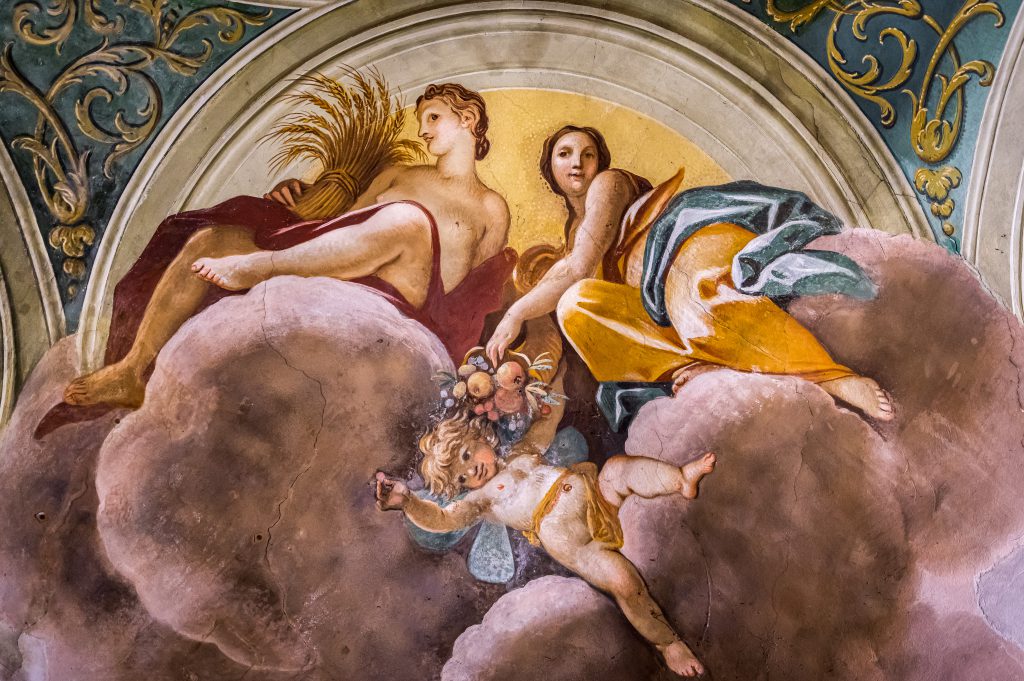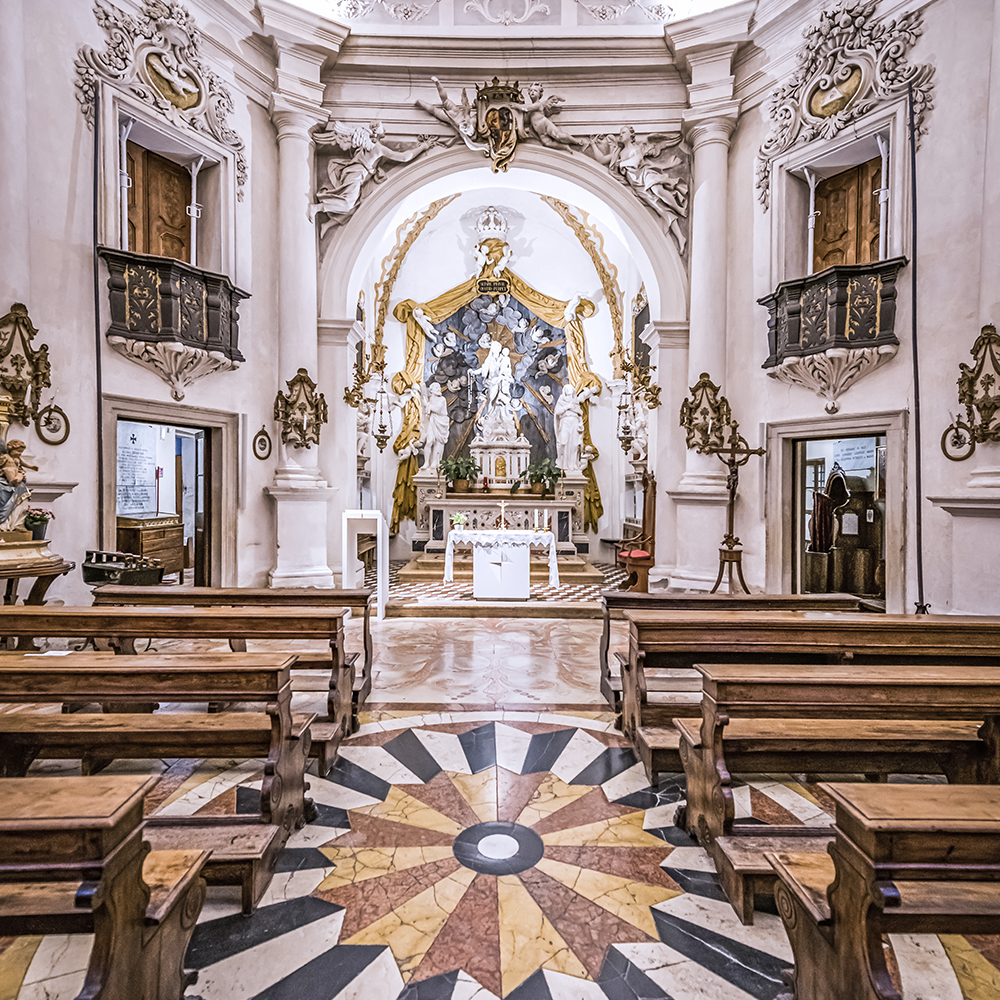Art
At the beginning of the 18th century, the Manin family commissioned Domenico Rossi to continue the work started in the “Fabrica di Persereano”. He used his artistic talents to complete the pre-existing building works and enhanced the house with imposing features that were intended to turn the complex into one of the most sumptuous palaces in Europe.
Rossi called in various artists to help with the project, including Louis Dorigny. Dorigny, who was born and educated in Paris, settled in Italy as a young man and worked extensively in the Veneto and in Friuli – Udine to be precise. He also worked in Passariano, where in 1708 he decorated one of the rooms used as a reception area with frescoes. These formed a large central circle depicting the Triumph of Spring in a Baroque setting that also included the allegories of Love, Glory, Wealth and Abundance.

The works of Giuseppe Torretti, another prominent artist who worked on the house, can be admired in the Chapel of S. Andrea and the magnificent adjoining sacristy, which was visited in 1737 by the Patriarch of Aquileia Daniele Delfino.
The small church is a real gem, with a façade designed by Domenico Rossi that incorporates small-scale reproductions of decorative themes from the façade of San Stae in Venice, sculptures by Torretti (the three altars in the chapel) and stucco work by Abbondio Stazio.
The opulent sacristy contains two panels bearing bas reliefs, the altar of the Crucifix and the altar of Our Lady of Mount Carmel overlooking souls in Purgatory, also by Torretti. The chapel was connected by corridors to the upper floors of the main building so that the noble family could come and go discreetly, but it also maintained its function as a place of worship for the inhabitants of the village of Passariano.
